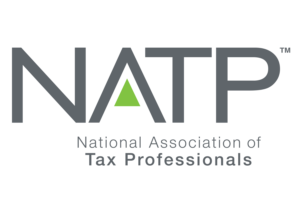Business Formation
When forming a business, the entrepreneur may select from several different types of structures. The differences between each of these business structures center around a few main issues, including taxes and the personal liability of the business shareholders. Regarding taxes, the business structure selected will determine whether business profits may be passed through to the shareholders (i.e., profits are subject to only one level of taxation at the shareholder level) or whether business profits will be taxed at the business level and again at the shareholder level if such profits are distributed to the shareholders. As for the liability issue, the business structure selected will also dictate whether shareholders will be liable for the debts incurred by the business or whether the shareholders will only be risking the capital they paid to purchase equity in the business.

Schedule a Consultation
Sole Proprietorship
This is the simplest business entity there is. As the name implies, the establishment has just one owner. That owner may choose to use his or her own name or “D/B/A”, means, “doing business as”. The requirements are minimal – just a social security number and the necessary permits and licenses.
These are often a top choice for small businesses because they are so economical to start up. Benefits include the fact that income is taxed once, instead of twice as a company and then a personal source of revenue. Sole proprietorships are not subjected to as much government involvement and taxation as some other business types. Since only one person is involved, conflicts with partners, their associates, or family members are nonexistent. Also, it is quite easy to dissolve.
A major point to be aware of is that under the law, there is no distinction between the individual and the business. That can sometimes jeopardize the owner’s personal assets should the business go through financial problems. The same is true in the reverse, should the business owner experience hardships, such as divorce, illness, or some other personal difficulty, the business may be negatively affected.
It takes an astute individual to successfully operate this type of business. They are 100 percent responsible for all of the decisions and raising capital. There are also certain employee benefits that cannot be fully deducted from the firm’s income. Owners should realize that some costs could only be partially deducted later as an adjustment.

Partnerships
This formation typically takes place when two or more individuals form a written agreement to operate a business together. Partnerships can also be established between other businesses and among one or more businesses and one or more individuals. This choice is also fairly simple and inexpensive to establish. However, partnerships have their own unique set of tax and liability issues.
Of course, this type of business allows for shared responsibilities when it comes to raising capital, making important decisions, and managing operations. On the flip side, when conflicts arise, no matter how large or small, unresolved issues can endanger the business. Those considering a partnership need to proceed with caution because if one partner makes a financial or legal misstep, it can spell disaster for the company as a whole.

Corporations
Going through the process known as “incorporation” sets up the most flexible type of company. Corporations are state-chartered and have a number of legal rights. Its owners have limited liability because the corporation has separate legal standing. The owners are thereby protected from personal legal action, should the business be sued. However, corporations undergo a great deal of scrutiny and are held accountable for their actions at a higher level. An example, the government oversees the operations of a corporation and requires them to appoint a board of directors, hold regular meetings, record, and publish meeting minutes. Income is also subject to taxation as both personal and business revenue. Another point to keep in mind is that ownership can be transferred through the sale of stock or the transfer of a controlling interest within the corporation.
“C” Corporations
A “C” corporation, under United States federal income tax law, refers to any corporation that is taxed separately from its owners. A “C” corporation is distinguished from an “S” corporation, which generally is not taxed separately. Many companies, including most major corporations, are treated as “C” corporations for U.S. federal income tax purposes. “C” corporations and S corporations both enjoy limited liability, but only “C” corporations are subject to corporate income taxation.
S” Corporations
An “S” corporation, for United States federal income tax, is a closely held corporation (or, in some cases, a limited liability company (LLC) or a partnership) that makes a valid election to be taxed under Subchapter “S” of Chapter 1 of the Internal Revenue Code. In general, “S” corporations do not pay any income taxes. Instead, the corporation’s income and losses are divided among and passed through to its shareholders. The shareholders must then report the income or loss on their own individual income tax returns.
Limited Liability Corporations (LLCs, LLPs)
These types of businesses have many of the same built-in advantages as corporations. Along with their limited liability, LLCs can be owned by a variety of entities, including individuals, trusts, other LLCs, and corporations. When it is set up under the proper guidelines, an LLC can be taxed like a partnership, which is an advantage. However, there is quite a bit of paperwork, such as an operating agreement or a newspaper advertisement, required to form and operate an LLC to ensure that it will not be taxed as a corporation.
Exempt Organizations (EOs, NPOs)
A not-for-profit corporation is one specifically formed for purposes other than operating a profit-seeking business. A not-for-profit corporation is a type of non-profit organization (NPO). They are also referred to as 501 (c) corporations, named after the section in the Internal Revenue Code for the designation of non-profit organizations.





